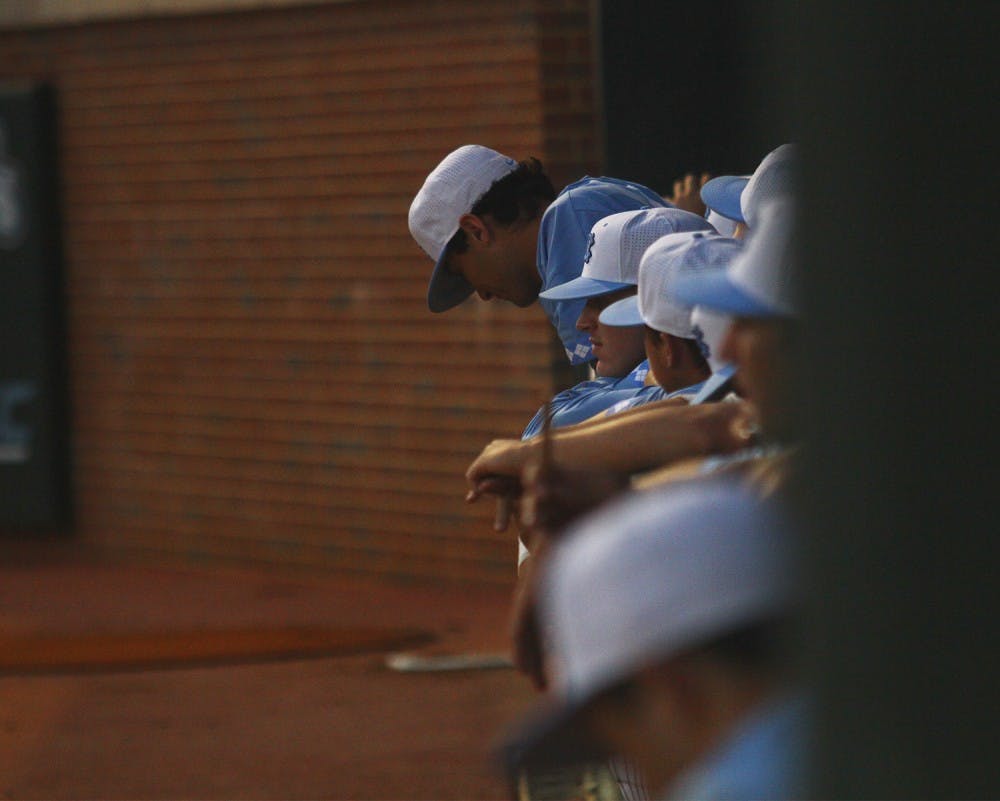But in conference play, North Carolina struggled at the dish. Over the course of 30 conference games, only one regular starter — junior center fielder Tyler Ramirez — hit above .300. Five hit less than .215.
Strikeouts jumped from 104 over the first 20 games (5.2 per game) to 230 over the final 35 (6.6 per game).
So what happened? One might think that it may be because the Tar Heels faced off against tougher competition down the stretch in conference play, but the Tar Heels may have done this to themselves.
After such a hot start offensively, most of the players didn’t know how to adjust when they hit their first slumps.
When things weren’t going the way they wanted, they admittedly tried to do too much, and started to do things that they didn’t do over the first month of the season — chasing pitches out of the zone, not calling for time in the box to regain a rhythm and digging themselves into several pitcher’s counts.
Because of this the Tar Heels went from one of the most potent offenses in the country to a group who could struggle to string hits together.
On the mound
North Carolina had two talented starters in its rotation — junior Zac Gallen and sophomore J.B. Bukauskas — but what hurt the Tar Heels down the stretch was the lack of a solid No. 3 option.
With Gallen and Bukauskas slotted into the first two games of a weekend series, the third game was often left to sophomore righty Jason Morgan. Morgan’s numbers weren’t terrible — a 3-3 record with a 4.10 ERA — but he struggled to stay in the game when he pitched.
In the sophomore’s last 10 starts, eight times he lasted less than five innings. This often left UNC’s bullpen bearing most of the load through the middle and late innings.
Pitching on the final day of the series ended up being an achilles’ heel for the Tar Heels in conference play. If the team lost one of its first two games when Gallen or Bukauskas took the mound, there was a pretty good chance it would lose the series.
In ACC play, UNC went 2-8 in Game 3s. This was part of the reason why UNC lost six of its final eight conference series.
To get the day's news and headlines in your inbox each morning, sign up for our email newsletters.
North Carolina’s bullpen began to struggle as well down the stretch. Through the first 20 games of the season, sophomore lefty Hunter Williams had a 0.64 ERA in 12 appearances. In ACC play, Williams made seven appearances — his ERA ballooned to 9.00. That’s a run an inning.
Four other relievers who made at least four appearances over the season had an ERA above 5.00 in conference play.
What’s next?
While the past two seasons have been horrid for the Tar Heels, there is hope that 2017 will bring more success.
Only two players on the team — infielder Eli Sutherland and reliever Chris McCue — were seniors in 2016. If no productive juniors, namely Gallen and Ramirez, opt to enter the 2016 MLB Draft, the Tar Heels will return almost everyone from this year’s team.
The ability to return so many players from the 2015 squad means that North Carolina could have a strong leadership base to build around going forward.
If the Tar Heels can work on the things that caused issues in conference play this, it should have the personnel to end the NCAA Tournament drought.
But still, fans should be cautiously optimistic.
Heading into the 2016 season, North Carolina believed it had the ability to separate itself from the 2015 squad.
The players had bought in. The bad apples were gone. Everyone was excited.
But sometimes excitement is only temporary. And sometimes success is, too.
@jbo_vernon
sports@dailytarheel.com



